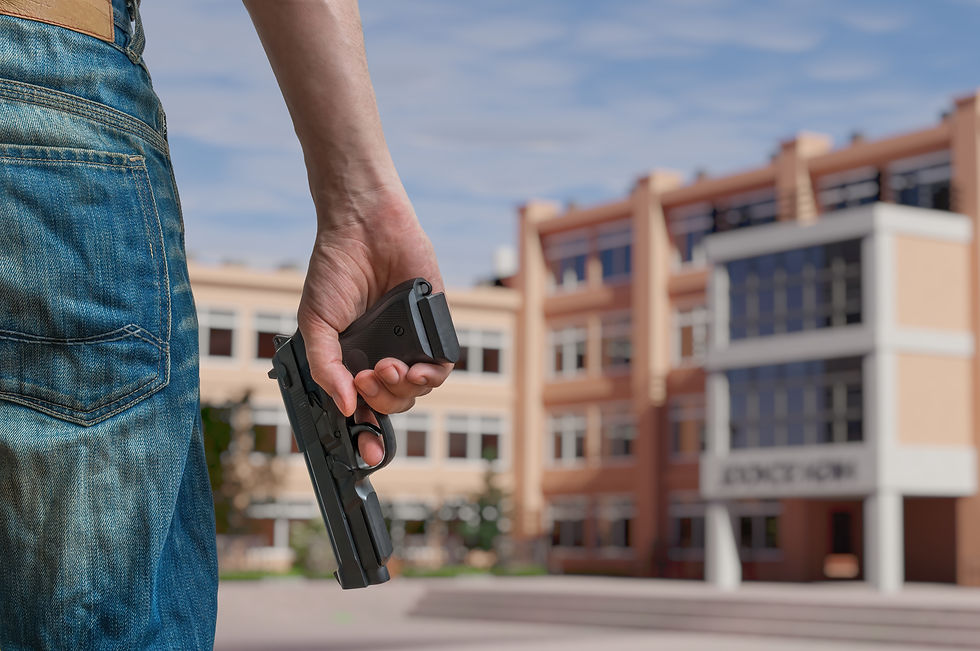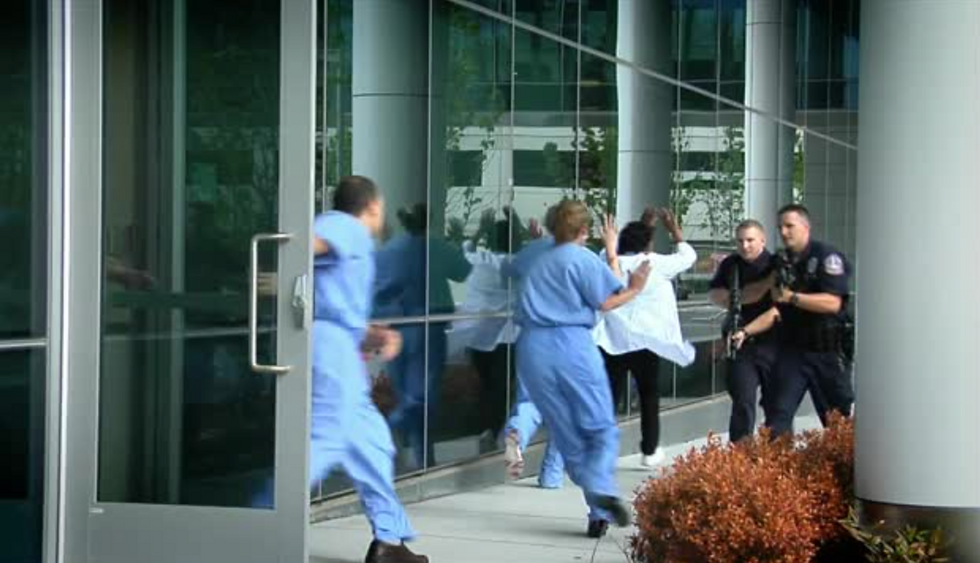Unveiling the Shocking Truth: How Media Contagion Fuels Copycat Shootings and Suicides
- gene423
- Jun 17, 2023
- 4 min read

Mass shootings and suicides are tragic events that not only devastate communities but also capture widespread media attention. However, it is crucial to understand the potential negative consequences of sensationalized media coverage, which can contribute to a phenomenon known as media contagion. This blog post explores the concept of media contagion in the context of public mass shootings and suicides, shedding light on the copycat effect and the dangers associated with it. By examining relevant studies and real-life examples, we aim to raise awareness about the potential harm caused by sensationalized reporting and offer actionable recommendations for responsible media coverage.
Note: This blog is a summary of the academic study by Dr. Lisa Pescara-Kovach, and Dr. Mary Jeanne Raleigh titled “The Contagion Effect as it Relates to Public Mass Shooting and Suicides.”
Media Contagion of Public Mass Shootings

Public mass shootings have become a disturbingly recurrent occurrence in our society. One aspect that warrants attention is the copycat effect, where subsequent shootings replicate the actions of highly publicized incidents. The media contagion surrounding these incidents acts as a catalyst, fueling the desire for notoriety among individuals seeking to imitate the original acts.
Examples such as the Columbine High School shooting demonstrate the copycat effect, with numerous plots attempting to replicate the initial incident, often with the intention of surpassing the body count. Media coverage plays a significant role in perpetuating these incidents by providing detailed information, sensationalizing the events, and glorifying the perpetrators. The desire for fame and revenge, as observed in various cases, further contributes to the contagion effect.
To combat media contagion and reduce the risk of copycat shootings, it is crucial to promote responsible reporting. Media outlets should avoid sensationalizing the incidents, limit the focus on perpetrators, refrain from sharing graphic details, and highlight the collective efforts of the community in overcoming such tragedies. By following these guidelines, media organizations can play a crucial role in mitigating the copycat effect associated with public mass shootings.
The Problem of Fame-Seeking

Notably, media contagion extends beyond mass shootings and encompasses suicides as well. Research indicates that many contagion-based suicide attempts are perpetrated by individuals seeking fame and notoriety. Similar to mass shootings, sensationalized media coverage of suicides can lead to an increase in suicidal behaviors among vulnerable individuals.
The highly acclaimed series "Thirteen Reasons Why" serves as an example of how media can contribute to the contagion effect. The show depicts the protagonist's suicide in explicit detail, addressing sensitive topics such as bullying, assault, and mental health struggles. While the series attempts to provide resources and expert interviews, the graphic nature of the suicide scene and the infatuation with revenge can have detrimental effects on susceptible viewers.
To address this issue, responsible reporting and media portrayal of suicides are crucial. Media organizations should avoid sensationalizing suicide, refrain from graphic depictions of the act, and provide comprehensive resources for those struggling with mental health. Moreover, open discussions about suicide, facilitated by parents, educators, and mental health professionals, can help reduce the stigma surrounding mental health and promote help-seeking behaviors.
Recommendations for Responsible Reporting

In light of the potential harm caused by media contagion, it is essential to establish guidelines for responsible reporting on both mass shootings and suicides. These recommendations aim to minimize the copycat effect, reduce sensationalism, and provide accurate information to the public.
For reporting on mass shootings, media outlets should:
Lessen the focus on perpetrators and avoid glorifying their actions.
Refrain from showing victim and perpetrator photos together.
Limit the use of shooter photos.
Avoid stigmatizing mental illness but address its correlation with mass shootings.
Avoid sensationalizing or romanticizing the
Be sensitive when interviewing survivors and their families.
Highlight community resilience and support in the aftermath of a shooting.
Avoid placing blame on specific targets, schools, or communities.
When reporting on suicides, media organizations should:
Provide general information about suicide without sensationalizing it.
Use concrete and non-sensationalized headlines.
If a photo is shown, ensure it is appropriate and relevant.
Include suicide prevention hotlines and text/cell phone-based resources.
Frame suicide as a public health issue rather than a crime.
Share information on warning signs and risk factors for suicide.
Use accurate data and avoid sensationalized language.
Include expert insights to provide correct information and best practices for suicide prevention.
Conclusion
Media contagion is a concerning phenomenon that can contribute to the copycat effect in both public mass shootings and suicides. Sensationalized reporting, graphic depictions, and glorification of these incidents have the potential to inspire others to replicate these actions. However, by adopting responsible reporting practices, media organizations can play a vital role in mitigating the contagion effect and reducing the risk of copycat incidents.
It is crucial for media outlets to prioritize ethical journalism by adhering to guidelines that minimize the focus on perpetrators, avoid sensationalism, and provide comprehensive resources for those in need. Furthermore, fostering open discussions about mental health, promoting help-seeking behaviors, and reducing stigma are essential steps in combating the contagion effect.
As a society, we must recognize the power of media and its influence on vulnerable individuals. By working together to promote responsible reporting, we can create a safer environment and contribute to the prevention of future tragedies.
Remember, responsible reporting saves lives.
Reference:
Pescara-Kovach, L., & Raleigh, M. J. (2017). The contagion effect as it relates to public mass shootings and suicides. The Journal of Campus Behavioral Intervention, 5, 35-45. https://www.alicetraining.com/wp-content/uploads/2019/08/The-Contagion-Effect-LPescara-KovachM.J.Raleigh.pdf







Comments